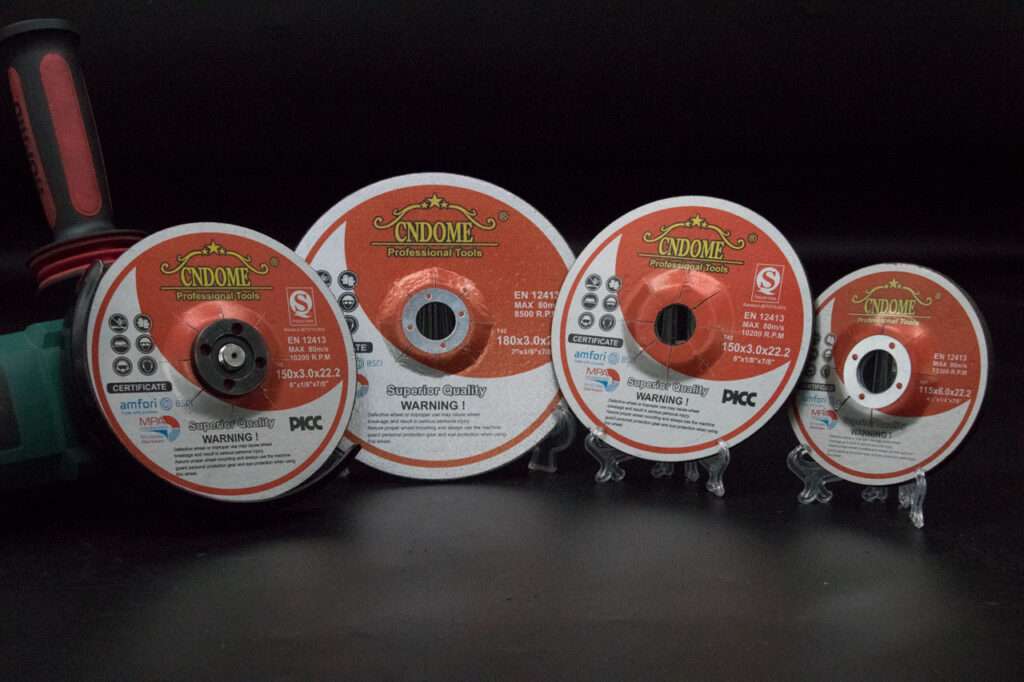Cutting stainless steel, commonly referred to as “Inox” (short for inoxydable, meaning stainless in French), requires precision and the right tools. One of the most critical tools for this job is the cutting disc. Stainless steel’s unique properties demand a disc that can handle the material’s hardness and resistance to corrosion without causing damage to the workpiece. In this blog, we’ll dive into the best practices, features, and considerations when selecting and using cutting disc specifically for Inox.
Why Inox Requires Special Cutting Discs
Stainless steel is known for its toughness and resistance to oxidation. However, these features also make it more difficult to cut, requiring discs with particular characteristics:
- Hardness: Inox has a high tensile strength, making it challenging to cut with standard discs. The cutting disc must be durable and hard enough to slice through without wearing out too quickly.
- Heat Resistance: Cutting Inox generates significant heat, which can lead to work hardening and affect the stainless properties of the metal. Discs designed for stainless steel typically include heat-resistant compounds to minimize this.
- No Contamination: Inox requires a disc that does not leave iron particles behind. These particles can cause rusting, defeating the purpose of using stainless steel.
Types of Cutting Discs for Inox
- Thin Cut-Off Discs (1.0mm – 1.6mm): These are ideal for fast, clean cuts in Inox. The thin profile ensures minimal material loss and reduces heat build-up. For stainless steel, the thinner the disc, the better the results, as it reduces the risk of overheating or discoloration.
- Depressed Center Discs: Also known as Type 27 discs, these are commonly used for both cutting and light grinding on stainless steel. Their flexibility allows for slight surface grinding, making them versatile in various Inox applications.
- Reinforced Abrasive Discs: These discs are often reinforced with fiberglass to provide extra durability and safety when cutting tougher materials like Inox. They are designed to resist cracking and breaking under high pressure, ensuring safe and efficient cutting.
Features to Look For in a Cutting Disc for Inox
- Contamination-Free Formula: Ensure that the disc is labeled as “Iron, Sulfur, and Chlorine-Free.” This means it won’t introduce contaminants to the material, which can cause rust or corrosion in stainless steel.
- High Performance Abrasive Materials: Look for cutting discs made from high-performance abrasives like aluminum oxide or zirconia alumina. These materials are tough enough to handle stainless steel without losing efficiency.
- Heat Resistance Coating: Some premium discs include a coating to minimize heat build-up, helping to prevent the disc from overheating during prolonged use.
- Maximum RPM Rating: Always check that the disc’s RPM rating matches or exceeds the RPM of your angle grinder. Using a disc at an improper RPM can lead to premature wear or even accidents.
Best Practices for Cutting Inox
- Use a High-Speed Angle Grinder: Cutting stainless steel with a powerful grinder ensures that the process is efficient and clean. Slow or underpowered grinders may cause more heat, leading to warping or burning of the metal.
- Maintain a Consistent Cutting Speed: Avoid putting too much pressure on the disc while cutting. Instead, let the tool do the work by maintaining a steady, moderate pace. Excessive pressure will cause heat buildup, shortening the life of both the disc and the material being cut.
- Keep the Work Area Clean: Dust and particles from previous cuts can contaminate the surface of Inox. Always clean the work area before making any cuts to maintain the integrity of the stainless steel.
- Use Proper PPE: Stainless steel cutting generates sparks and small particles, so make sure to wear the appropriate personal protective equipment (PPE), including safety glasses, gloves, and a face shield.
Conclusion
Cutting Inox requires the right type of cutting disc to achieve clean, accurate results without compromising the stainless steel’s integrity. By choosing the correct disc, such as thin cut-off discs with contamination-free compounds, and following best practices, you can extend the life of both your tools and materials. Whether you are working on industrial applications or small-scale projects, using specialized discs designed for Inox will ensure optimal performance and safety.



